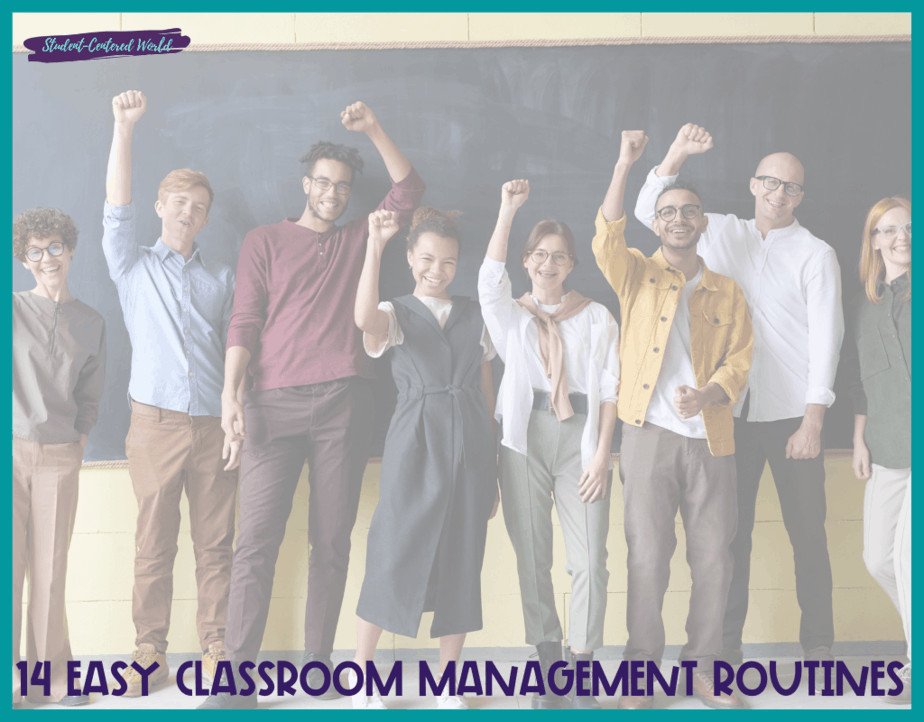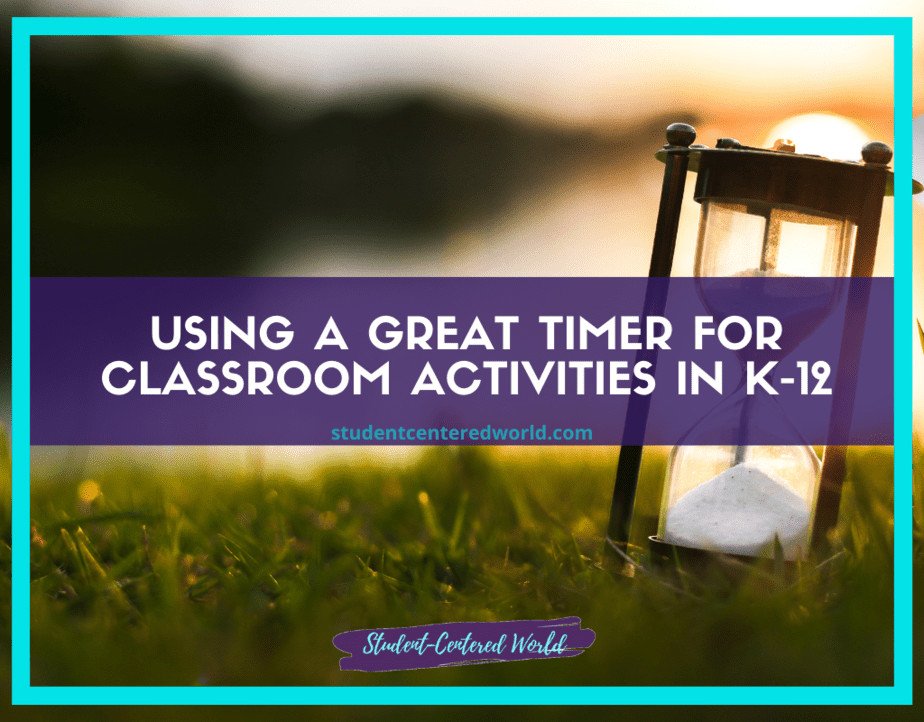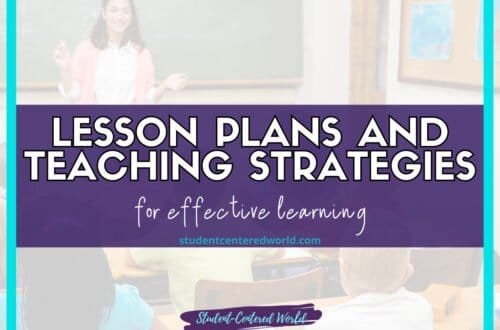14 Easy Classroom Management Routines
The foundation of a well-managed classroom lies in establishing clear classroom management routines and procedures. These strategies are crucial at every grade level, from elementary school to high school, and across all subjects. An effective teacher understands that implementing specific routines from the beginning of the school year sets the tone for a secure, positive learning environment.
This initial step is vital for the entire class, ensuring that each student feels prepared and understands what is expected of them.
Classroom management involves guiding student behavior to foster positive interactions and minimize disruptions. By establishing clear classroom expectations during the first days of school and consistently reinforcing them throughout the year, teachers can create a structured environment where students know how to navigate daily tasks and transitions.
For instance, using anchor charts and behavior charts can help students understand the right way to proceed with activities, whether it’s starting bell work at the beginning of class or using hand signals to request the pencil sharpener.

From the first week of school, implementing effective classroom procedures and routines ensures that every student is on the same page. This might include explicit instruction on how to handle independent work, group work, and what to do when the bell rings. By setting these guidelines, teachers save time in the long run, allowing for smoother transitions between activities and reducing the need for constant reminders.
Ultimately, the goal is to create a learning environment where positive relationships flourish, and both students and teachers can focus on academic performance and growth.
14 Easy Classroom Management Routines and Procedures
- Classroom Structure: Understanding the classroom structure is crucial for catering to the needs of your students. Some students require a highly structured environment, while others thrive in a more relaxed setting. Balancing these needs is vital for effective classroom management.
- Ask Academic Questions: Engaging students with academic questions is a great way to keep them involved and attentive. This strategy is particularly effective for students who benefit from structure.
- Strategic Seating Arrangements: Arrange seating to mix students who can positively influence each other. For instance, seating a student who struggles with disruptive behavior next to a positive role model can be beneficial.
- Classroom Economy System: Implement a classroom economy where students earn “classroom dollars” for positive behaviors, completing tasks, and participating in class. They can then use these dollars to buy privileges or small rewards.
- Variety in Daily Routines: Incorporate a variety of tools and activities in your daily routines to keep students engaged. Using posters, charts, and other visual aids can make routines more dynamic and interesting.
- Positive Reinforcement: Focus on positive reinforcement to encourage good behavior. Rewarding students for meeting expectations helps to create a positive classroom climate and reinforces effective teaching.
- Classroom Jobs: Assigning classroom jobs gives students a sense of responsibility and ownership over their learning environment. This strategy is particularly effective in elementary classrooms.
- Clear Instructions: Provide clear instructions and alert students ahead of time about what is expected. Use posters, previews, and word walls to minimize confusion and prevent misbehavior.
- Differentiate Instruction: Tailor your classroom management routines to accommodate the diverse needs of your students. Differentiating your instruction helps to create a more inclusive learning environment.
- Effective Use of Body Language: Your body language sets the tone for the classroom. Maintain a calm and relaxed demeanor to promote a positive learning environment and model appropriate behavior for students.
- Wait Time Strategy: Use the “wait time” strategy to allow students to calm down and refocus before continuing with the lesson. This can help prevent emotional reactions and keep the class on track.
- Role Play for Practice: Practice classroom management routines through role play. This helps students understand and internalize expectations, making it easier for them to follow routines consistently.
- Restorative Practices: Use restorative circles or meetings to address behavioral issues. This approach focuses on repairing harm and restoring relationships rather than punishment.
- Stewardship and Responsibility:
Encourage students to take responsibility for their learning environment by discussing acceptable behaviors and expectations. This promotes a sense of stewardship and a positive classroom community.
Handling Non-Compliance in the Classroom
Despite your best efforts, there may be times when students do not respond to your classroom management routines and procedures. It is essential to remain calm and composed, as getting upset can further disrupt the class. Misbehavior is a normal part of classroom dynamics, and it is your job as an educator to find effective strategies to address it.
The key to handling non-compliance is understanding that every student is unique and may require different approaches to behavior management.
One of the first steps in addressing non-compliance is to identify the root cause of the behavior. This can often be achieved through observation and by talking to the student in a non-confrontational manner. Understanding the underlying reasons for a student’s behavior can provide insights that help you tailor your approach. For example, a student acting out might be struggling with academic content, facing issues at home, or experiencing social challenges.
By identifying these factors, you can better support the student and address the behavior more effectively.
When dealing with non-compliance, it is crucial to set clear and consistent expectations. Students need to understand what is expected of them and the consequences of not adhering to these expectations. Reinforcing classroom rules regularly and ensuring that students are aware of the behavior guidelines can help minimize disruptions. Moreover, consistency in enforcing these rules is vital.
If students see that consequences are applied fairly and consistently, they are more likely to comply.

Another important aspect of managing non-compliance is maintaining a positive and supportive classroom environment. Building positive relationships with students can significantly impact their behavior. When students feel respected and valued, they are more likely to respect the classroom rules and the teacher’s authority.
Take time to get to know your students, show interest in their lives, and acknowledge their efforts and achievements. This can foster a sense of community and belonging, which can reduce instances of non-compliance.
Communication with parents is another critical component of handling non-compliance. If issues persist, it is important to involve parents in resolving disruptive behavior. Early intervention is key to preventing problems from escalating. By working together with parents, you can develop a comprehensive approach to addressing the student’s behavior.
This might involve setting consistent expectations at home and school, using similar strategies for reinforcement, and maintaining open lines of communication to monitor progress.

Classroom Management Tools
Implementing effective classroom management tools can make routines run more smoothly and help prevent non-compliance. These tools provide structure and support, making it easier for students to understand and follow expectations. Here are some effective tools to consider:
Two-Minute Warnings
Use two-minute warnings to prompt students to improve their behavior. This strategy provides a clear timeframe for students to comply with expectations. For example, if a student is off-task, you can give a two-minute warning, letting them know they have a short period to refocus and get back on track. This technique helps students understand that there is a limited time to correct their behavior, encouraging them to act promptly.
Buddy System
Pair students together to provide mutual support and encourage positive behavior. The buddy system can be particularly effective in fostering a sense of responsibility and community among students. By having a buddy, students can help each other stay on task, remind each other of classroom rules, and provide moral support. This system can also help students develop social skills and build positive relationships with their peers.
Classroom Jobs
Assign specific tasks to students to foster a sense of responsibility and community. Classroom jobs can range from simple tasks like passing out materials and cleaning up to more significant responsibilities like leading group activities. By giving students ownership of certain tasks, you can help them feel more invested in the classroom environment. This sense of responsibility can lead to improved behavior as students work to fulfill their roles.
Classroom Coupon System
Reward good behavior with coupons that can be exchanged for treats or privileges. The classroom coupon system is an excellent way to provide positive reinforcement for desirable behaviors. When students exhibit good behavior, they earn coupons that they can later trade for rewards such as extra recess time, a homework pass, or a small treat. This system not only encourages positive behavior but also teaches students about delayed gratification and goal-setting.
Chants and Songs
Use chants and songs to reinforce learning and make transitions more engaging, especially for younger students. Chants and songs can be a fun and effective way to capture students’ attention and reinforce important concepts. For example, you can use a song to signal the transition from one activity to another or a chant to remind students of classroom rules. These tools can make learning more enjoyable and help students remember important information.
In addition to these tools, it is important to be adaptable and willing to adjust your strategies as needed. What works for one group of students may not work for another, and being flexible in your approach can help you find the most effective methods for managing your classroom. Regularly reflecting on your classroom management practices and seeking feedback from colleagues can also help you improve and refine your strategies.

Handling non-compliance in the classroom requires patience, consistency, and a positive approach. By maintaining clear expectations, building positive relationships, involving parents, and using effective classroom management tools, you can create a supportive learning environment where students are motivated to comply with rules and engage in positive behavior. Remember that every student is different, and finding the right strategies to meet their unique needs is the key to successful classroom management.
Conclusion
Effective classroom management routines and procedures are essential for a successful teaching career. By establishing clear routines from the first day of school and using the right tools, you can create a positive learning environment that supports student learning and minimizes disruptions. Examples of routines, such as starting the day with a bell ringer or using anchor charts and behavior charts, provide a clear path for students to follow.
This consistency is crucial, whether you’re teaching middle school or younger classrooms, to ensure students understand the classroom rules and expectations from the beginning of the year.
Flexibility is key to good classroom management. While establishing important classroom routines is the first step, it is equally important to adjust your strategies as needed to meet the unique needs of your students. Whether you are a student teacher or an experienced educator, adapting your approach based on the classroom setting, specific students, and different times of the day can make a significant difference.
For instance, small groups might work best during instruction time, while whole-class discussions might be the perfect tool for the end of the day. The ability to pivot and find the best way to manage the classroom will help address some of the biggest challenges teachers face.
Ultimately, the most important thing is to create a learning environment where students have plenty of time for learning and minimal distractions. From managing cell phone use to ensuring there is a clear path for transitions to the next activity, effective classroom management ensures that students’ attention remains focused on their work.
By dedicating time at the beginning of class and throughout the school day to reinforce routines, you set the stage for a productive school year. As you look towards your future classroom, remember that good classroom management is not about a single thing but a combination of successful classroom routines tailored to your own classroom’s needs.
Stop Driving the Teacher Struggle Bus
Are you struggling with student engagement, apathy, or keeping your class on track?
💫💫 There’s hope! 💫💫
If you’re ready to take the first step towards reviving student engagement and transforming your classroom, I invite you to join me for my free workshop “Reversing Student Apathy” designed to equip educators with innovative strategies that work.
This interactive workshop will provide an invaluable opportunity for educators to explore the complex factors contributing to student apathy. By examining underlying causes and discussing broad strategies, participants will be equipped to make meaningful changes in their teaching methods. The sessions are designed to be engaging and collaborative, allowing educators to share experiences and develop a collective approach to overcoming challenges in student engagement.
The workshop will also emphasize the importance of community and network building among educators. Participants will be encouraged to connect with one another, sharing insights and strategies that have been effective in their own classrooms. This network will serve as a continued resource, offering ongoing support as educators implement new tactics to inspire their students.
Highlights of the workshop include:
- A deep dive into the roots of student apathy and its impact on learning.
- General strategies for enhancing classroom dynamics to better engage students.
- The role of educator-student relationships in fostering a more inviting and interactive learning environment.
- Broad discussions on integrating innovative approaches to teaching that resonate with today’s students.
Each educator attending the workshop will gain access to a variety of general resources aimed at enriching the educational experience. Furthermore, an online community will be available for post-workshop engagement, allowing for sustained collaboration and support among peers.
This workshop is an excellent fit for teachers, administrators, and educational professionals who are passionate about reversing the trends of student disengagement and nurturing a more dynamic and responsive educational atmosphere. It presents a unique chance to join forces with like-minded professionals determined to make a significant impact on the academic and personal lives of their students.
As we strive to address these pressing challenges, the workshop offers a platform to unite and empower educators from diverse backgrounds. Registration is essential as spaces are limited, ensuring a focused and productive environment for all participants.
Don’t miss this chance to be part of a pivotal movement in education. Please register today and be part of the solution, helping to reignite enthusiasm and engagement among students and setting them on a path toward a more successful and fulfilling academic experience. Join us as we take proactive steps toward a brighter educational future.
This article was originally published on September 27, 2021





